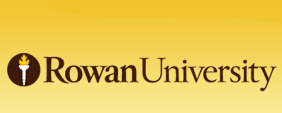Approved theses and dissertations from Rowan University graduate programs have been made available to the public on Rowan Digital Works since 2015. Theses and dissertations submitted in digital format between 2010 and 2015, or submitted in paper format between 1996 and 2010 and later scanned, are also available in Rowan Digital Works.
Theses approved between 1996 and 2010 are stored as bound volumes in Campbell Library and may also be online in Rowan Digital Works .Theses produced prior to 1996 are stored as bound volumes in Campbell Library only.
Graduating students may request an initial embargo period on public access to their work of 6 months, 1 year, or 2 years when they submit their thesis or dissertation to the School of Graduate Studies. Authors wishing to later extend the embargo period in Rowan Digital Works must contact the School of Graduate Studies for approval using the Embargo Extension Request Form.
If you are the author of a thesis or dissertation produced for Rowan University or Glassboro State College before 2010, or the Graduate School of Biomedical Sciences before September 2023, and you do not want your document to be publicly available in Rowan Digital Works, you must complete and submit this take-down form to request its removal from the repository. For more information, please also see Rowan University Libraries Thesis & Dissertation Guidance for Embargoes and Withdrawals
Theses/Dissertations from 2019
Development of functionalized imidazoles as potential therapeutical agents, Drew Christopher Morgan
Common factors that benefit and hinder the co-teaching partnership in the high school setting, Kaitlyn Nicole Muller
Is the competent learner model effective for students with autism?, Christopher Robert O'Brien
Evaluation of the cracking performance of geogrid-reinforced hot-mix asphalt for airfield applications, Daniel Offenbacker
Successful transition planning for individuals diagnosed with ASD: A comparison of sending and receiving school districts, Carly J. Olcese
The effects of technology use in a third grade inclusion classroom, Jamie C. Ott
Kindergarteners' use of oral language when interacting with texts, Carrie Lee Owens
Inverted cone convolutional neural network for deboning MRIs, Oliver John Palumbo
Intramural sports leadership: Exploring the impact of being an intramural sports official on leadership skills, Shan Yu Paracka
Town-gown sense of community in campus-adjacent neighborhoods: A mixed methods study, Andrew Perrone
Investigations of novel strategies to treat bacterial infection and development of new reaction methodology, Shane Philippi
Enhancing generalization of social skills with students with significant disabilities, Joseph John Prenenski
The lived experiences of Black men creating a third space at a predominantly White institution, Steven E. Radwanski
Program evaluation of Greek showcase events at Rowan University, Xochil R. Ramirez
The implementation and effectiveness of Tier 2 Response to Intervention reading comprehension in 4th grade, Christine Renee Reichert
Characterization of Human dUTPase, Shawna Marie Rotoli
The effects of the station teaching model of co-teaching on students with learning disabilities, Kathryn A. Ruoff
Laboratory evaluation of cold in-place recycling asphalt mixtures using a balanced mix design, Ahmed Saidi
An investigation of first-generation student experiences and their career development, Desiree Saraceno
Natural Autoantibodies: Origin, Function and Utility for Diagnosis of Disease, Abhirup Sarkar
A needs assessment for programming for adult undergraduate students at Rowan University, Jennifer V. Savage
The effects of Response to Intervention on reducing the numbers of African American students in special education, Kimberly Savino
Kindergarten students' interactions with texts during independent reading, Tracy L. Schaper

